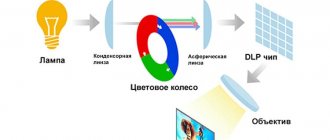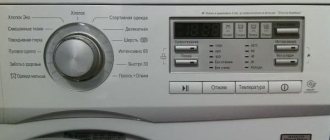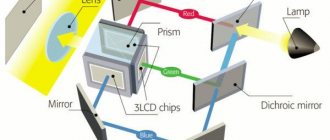For a long time now we can’t imagine our life without our favorite TV shows and films. Therefore, the TV in the apartment of a modern person is the main gadget. To access television outside the city (for example, in a country house), you need a satellite dish. This device is designed to watch a wide range of TV channels in digital and HD quality. There are also regular television antennas that receive and broadcast digital terrestrial TV. However, sometimes the signal strength is not enough and the image on the TV screen is broadcast with interference.
What factors influence the deterioration of a TV signal?
The reasons for interference in broadcasting may be different. The most common of them:
- distance of the TV from the repeater;
- unsuitable TV antenna;
- a large amount of noise within the antenna radius;
- physical obstacles to signal transmission (high-rise buildings, trees, industrial buildings);
- non-working condition of the cable;
- incorrect orientation of the transmitter;
- metal structures near the antenna;
- signal distribution to several receivers;
- outdated technology.
What affects signal quality
Digital terrestrial television is broadcast from a common repeater. Satellite dishes receive the signal from the satellite and send it to the set-top box for decoding. As a result of any of the options, users watch a minimum of 20 basic channels in digital quality on TV.
Signal transmission interference is:
- Distant location of the central repeater;
- The antenna for satellite or terrestrial TV is incorrectly selected;
- Presence of natural noise;
- There is a lot of interference on the signal path: trees, high-rise buildings;
- The cable is mechanically damaged;
- The transmitter orientation is incorrectly configured;
- Old equipment cannot cope with the new format;
- Weather, atmospheric influences;
- External interference, for example, the location of metallic interference near the antenna;
- The TV signal is divided into several devices simultaneously.
Advice. Before purchasing or assembling a TV signal amplifier, you must visually inspect the cable, check that the settings and equipment connections are correct.
What is an antenna amplifier?
Antenna amplifiers are devices that enhance the quality of a television or radio signal, as well as reduce all kinds of interference. They increase the range of the signal, bringing the broadcast “picture” to maximum quality. Amplifiers are necessary for residents of both suburbs and metropolitan areas: for example, when the television tower is located at a distance or there are many high-rise buildings around the house that create obstacles.
REFERENCE: Thanks to the shape and design of the antenna, it receives a clearer signal from one, maximum two directions.
Features of choice
Everyone's selection criteria are different. But the purpose of the acquisition is one - to make the received signal high-quality. If you ignore this, then interference cannot be avoided. Advice on choosing from experts boils down to the following: if you decide to purchase an inexpensive home amplifier, then you can’t expect more from it than passive participation. This is facilitated by the presence of metal structural elements.
But there are options that this is quite enough if the TV tower is in close proximity. For residents of rural areas or for owners of country cottages, as well as for owners of apartments on the first floors of a high-rise building, you will need a device with a high gain.
What types of devices are there? Currently, specialized stores will offer a variety of products to choose from, including outdoor and indoor antennas with a built-in compact amplifier. Which one is better to buy depends on many factors. The best one will cost a lot of money, and there may be no need for it. The best manufacturers annually release a lot of popular models. What should you pay attention to to avoid making mistakes when choosing? Check out the following expert recommendations:
- It is worth keeping in mind that no amplifier will work without being connected to electricity. To get it, you need to have a 12, 9 or 5 V network adapter. Today, new products are being released that can use an antenna cable as a power supply. Then you should make sure that your own TV can transmit. Popular models also differ in body. Some models are designed exclusively for mounting to an outdoor antenna. Their body is waterproof. Otherwise, their lifespan is until the first rain. If you need to purchase an indoor model, you do not need to pay attention to this characteristic. Experts recommend installing the amplifier close to the TV. If you ignore this advice, the device will not only amplify the signal, but also attract noise.
- The main indicator of the models included in the rating of quality products is the gain factor. You need to understand that a high value is not always optimal. First you need to decide on the nearest television center. A digital coverage map will help you with this question. When the tower is located thousands of kilometers from the user’s location, it is worth thinking about the maximum increase rate. In other cases, there is no need for such acquisitions. This will only increase the noise. Modern devices already have a built-in regulator. This suggests that the owner is able to adjust the indicator based on the location of the tower. Even if you purchase a product with the option disabled, you won’t be able to get rid of it completely. Therefore, even if you purchase a “sophisticated” design, it is impossible to get rid of noise if the tower is close enough.
- The devices have a wide range of amplified frequencies. If you review the purchased models, preference is given to broadband options. They are also called universal, as they are able to amplify all possible frequencies. Due to the transition to digital TV, it is almost impossible to purchase this kind of product.
- When purchasing the most expensive TV amplifier, you can get additional functionality in the form of a signal divider. The case is equipped with several output connectors. This makes it possible to connect several TVs to the device at the same time. You can, of course, purchase separate dividers, which are abundant in any specialized store. But it is worth keeping in mind that these dividers contribute to signal deterioration. As for the amplifier, it has no such drawback, no matter how many TVs are connected to it.
Classification of TV amplifiers
Amplifiers are divided into types:
- Mast. Those that are attached to the mast itself. Power is supplied to them via a coaxial cable. But this is precisely why such amplifiers do not last long, they can fail during a thunderstorm and lose quality due to oxidation of contacts. Mast amplifiers usually work for a couple of years.
- Internal. These are more convenient because they are located next to the receiver. True, signal losses still occur through the cable.
What types of amplifiers are there?
Devices that amplify television signals vary in classification and design.
There are devices for digital TV antennas and for analog signals. They have a power supply, both external and internal. The external unit is larger than the internal one, its input voltage depends on the amplifier, and can consume 5, 12, 18 or 24 V. The internal unit consumes up to 10 V, it requires a stable voltage of electricity. It may fail during power surges. If the unit burns out, you will have to replace the entire antenna completely.
Types of amplifiers depending on the received frequency
Devices according to classification are distinguished into:
- Broadband
These models are capable of covering a wide range of amplified frequencies. As a rule, they are used if the TV antenna signal is good, but does not provide an ideal image.
- Band
Designed to receive frequencies either meter (MV) - from 30 to 300 MHz, or decimeter (UHF) - from 300 to 3000 MHz. Can be used if the TV signal is very weak. Digital TV requires a UHF frequency range.
- Multi-band
Models with separate adjustment of different ranges.
According to the required voltage, they are divided into the following types:
- Five-volt.
They are connected using a coaxial cable and attached to the antenna.
- Twelve volt.
These devices work with a power supply.
Models for analog signal amplification
Modern radio technology devices can solve the problem of poor quality “picture” on your TV screen. Such devices have many advantages and allow you to eliminate interference yourself. It is important to make the right choice when combining the operation of the antenna and amplifier.
- Televes 5523.
Manufacturer from Italy, which provides amplifiers with five outputs. In addition, it has a fairly large amplifier coefficient - 16 dB, which significantly reduces noise and interference. The device operates via a separate power supply.
- Terra HA123.
This model is perfect for cottages or high-rise buildings, as it increases the signal by a factor of 28 dB and operates at various frequencies.
How to boost the signal up to 20 channels with your own hands step by step
You can make an antenna signal amplifier yourself. It is a board or stationary device attached to a cable or antenna. The components for creating such a board are common. They can be purchased at any radio equipment store. But assembly will require at least basic knowledge of electronics and soldering of elements.
Here is one of the diagrams for assembling an amplifier for a TV antenna:
- Buy microcircuit max2633 (VT), R=1 kOhm, 1 nF capacitors.
- Additionally, a DC source with a voltage of 2.8 - 5.2 V is purchased.
- The assembly diagram is shown in the photo.
The finished product produces a noise level of about 2 dB and a gain of around 13 dB. This is not enough for the TV receiver to be located far away from the repeater. But it is enough to improve the signal within medium and large cities. The resulting device is suitable only for indoor antennas. And it is designed for a very short range with frequencies up to 900 MHz.
Broadband amplifiers are assembled according to the same principle, but using a different circuit. If control is required, internal controllers are additionally connected. Home electronics technicians can assemble complex devices themselves that match and even exceed the quality of store-bought equipment.
Advice. If you have never soldered microcircuits and did not understand small boards, it is better to buy ready-made equipment. The cost of an amplifier for a home antenna is low. And it doesn’t take much time to connect.
Models for amplification of terrestrial and satellite signals
- Gecen A05-20.
Such an amplifier raises the signal coefficient to 19-21 dB. It operates in the frequency range for satellite television broadcasting 950-2400 MHz, terrestrial - 5-950 MHz. However, for greater effect, you may need a separate power supply.
- Polish amplifiers of the SWA series.
These models are mounted on “array” antennas and amplify the signal frequency in the range from 49 to 790 MHz.
They are installed mainly on antenna “arrays” and have different amplification coefficients. The frequency range varies from 49 to 790 megahertz. The supply voltage is 9 volts. Installation is carried out using a stud or threaded connection.
Basic criteria for choosing television signal amplifiers
The amplifier for the television antenna is selected according to the technical criteria of the device and in accordance with external factors (for example, the location and installation conditions). The most important thing is to take into account the characteristics that affect the quality of the television signal, for which they resort to the use of additional devices.
Operating frequency range
Three devices are associated with the frequency range: a television, an antenna and an amplifier. First of all, the antenna is selected. In this selection, it is necessary to take into account the superiority of narrow-beam over wide-range ones in terms of signal strength.
If the repeater is located close to the reception area, then an “all-wave” unit capable of covering a wider range is suitable. Receiving a signal from a remote television tower will be achievable using a device adapted to a limited frequency range (for example, MV or UHF).
The amplifier is selected in accordance with the frequency response of the antenna. If the range does not match, the existing device will not be able to function.
Noise figure
Using an amplifier, the TV signal-to-noise ratio should be adjusted upward. Taking into account the fact that when transmitting data, each device receives its own noise, as the signal increases, they also become more significant.
It is generally accepted that the value of the noise effect should not be more than 3 dB. Only under such conditions can we talk about guarantees of good quality TV signal transmission. However, newer devices may have a lower value of 2 dB.
Gain
The presence of the highest possible coefficient does not guarantee the best transmission quality. Moreover, with excessive amplification, the TV signal will be distorted with the opposite effect (clipping or overload).
To measure the parameter, dB is used, and its average values are:
- decimeter - from 30 to 40 dB;
- meter - 10 dB.
It follows from this that decimeter channels will have a coverage of 20 to 60 TV channels, and meter ones will have no more than 12. If the gain increases by 15-20 dB, we can talk about a good result.
When choosing an amplifier by coefficient, you need to base it on actual conditions and reception level. As a rule, the distance from the television tower (repeater) is taken into account. If the TV tower is located in direct line of sight, then purchasing an amplifier is not required.
Active or passive antenna
Antennas for receiving television signals can be passive and active:
- a passive antenna receives a signal only due to its own shape;
- for the active antenna , which increases the strength of the useful signal.
The active antenna must be provided with additional power from the network. As a rule, an amplification device is connected using a 9 or 12 V adapter. If the device is located outdoors, then you need to protect it from the rain. Be sure to take into account the information in the manufacturer's instructions warning about the possibility of interference if the device is not installed correctly.
A passive antenna can also be converted into an active one if an amplifier is added to it. This option may be more convenient than buying an antenna with a built-in amplification device - if the amplifier breaks down, it can be easily replaced. You can place it not next to the antenna itself, but in the attic or in a room, which will ensure a longer service life of the device.
DIY active antenna with amplifier for digital TV:
How to strengthen an indoor antenna
A few tips to help you get a clear picture on your TV screen:
- move the antenna and point it towards the television tower;
- supplement the antenna with a signal amplifier;
- increase the number of antennas and install them at the highest possible height;
- change the TV antenna to a more powerful one;
- remove all metal objects that interfere with signal reception;
- check the functionality of the cable, the absence of breaks, etc.;
- create the effect of a common-mode antenna array (CAR).
How to choose an antenna amplifier
The choice of antenna amplifier affects the entire operation of the antenna, so vigilance and some knowledge are also required here. When choosing a device, it is important to consider a number of factors:
- Frequency range.
- The distance from the amplifier to the repeater should vary from 10 to 150 km.
- The signal level at the output of the device should be approximately 100 dB per microvolt.
- The gain of the device must be at least 40 dB.
- It is important to know what type of device is receiving the TV signal.
- The noise figure should not exceed 3 dB.
- Current consumption is preferably within the range of 30-60 mA.
- The location of the amplifier and its distance from the TV.
Best Amplifiers
The rating of the best included devices with different purposes of application, type of design and standard installation location. They do not require complex setup and show good results in a huge number of cases. Some models allow you to fine-tune the signal characteristics in order to obtain optimal picture quality on all received channels without exception.
SWA 9001/999/9999/9009/9701 (L) broadband
Cheap and cheerful - this is how this amplifier can be described. It doesn't have any adjustments. The device is simply connected to the antenna; it receives power via the signal cable. The amplifier is broadband. It can be installed on both indoor and outdoor antennas. In the latter case, protection from precipitation by the housing is necessary. The device provides a reception range of up to 90-110 km, suitable for the CETV signal.
Pros:
- price tag;
- versatility of use;
- reception range;
- ease of installation.
Minuses:
- offered without protective housing;
- has an uneven gain within the frequency range;
- there is no way to adjust.
RTM LNA02
This product is distinguished not only by its reasonable price, but also by its good characteristics . The amplifier is designed for connection to set-top boxes with power on the port. Its main advantage is the low level of parasitic noise. It is optimal to use the device in areas of average reception, the maximum gain is 20 dB. The model will show good results for increasing the length of cable lines, acting as a tool for stabilizing the signal level. The device is suitable for all types of antennas, is installed directly on the F-connector, and does not require special configuration.
Pros:
- price tag;
- suitable for CETV;
- ease of installation;
- LN (Low Noise) low noise level.
Minuses:
- no settings;
- average gain;
- different gain in individual frequency passbands;
- Only for set-top boxes with port power.
Alcad AI-200
This amplifier is very popular. It is simple and at the same time offers a good level of performance. And most importantly - safety of use. Installed indoors, it does not require special ventilation conditions. The device consumes only 7 W, has two outputs, and provides a UHF wave amplification factor of 24 dB. The device is suitable for receiving CETV signal. It is completely self-sufficient, connected directly to the 220V network.
Pros:
- simplicity;
- safety;
- good CETV gain;
- two exits.
Minuses:
- For indoor installation only;
- 220V socket required;
- The power connection cable is quite short.
WISI VM 8351
This amplifier is able to save its owner from any problems with CETV reception with an external antenna. The device is a mast type and is designed for outdoor installation and operation in the most difficult conditions . It is housed in a completely sealed metal case. The delivery set includes its own 24V power supply. The gain is adjustable, from 15 to 35 dB, you can adjust the equipment in accordance with the reception area. The amplifier is connected using F-connectors; it has one input and two outputs.
Pros:
- secure execution;
- full set;
- gain control;
- suitable for CETV.
Minuses:
- only for working with CETV;
- 220V socket required;
- two functional blocks.
TERRA HA126
Positioned as a home amplifier, this amplifier will be an excellent solution for private homes with a large number of TVs. Or for an apartment where CETV reception is carried out using an external antenna. The device generates a high signal level, has a gain of up to 20 dB, and is capable of adjusting the slope of the frequency response to adjust the optimal quality on all channels. The frequency response unevenness indicator is only 0.5 dB. The amplifier can operate at temperatures from -20 to 50 degrees, but must be installed indoors. It has a low noise figure.
Pros:
- high output signal level, suitable for a network of several TVs;
- broadband, from 47 to 862 MHz;
- suitable for CETV;
- allows for fine tuning;
- There is a test port for tuning the antenna.
Minuses:
- average basic CG;
- price tag;
- only one exit;
- To connect you need a 220V socket.
Connecting the amplifier to the antenna
An antenna amplifier is a small electrical circuit. If the antenna is already connected, then with a few bolts the necessary device is attached to its mast between the matching device and the feeder. If you do not have special equipment, then to check the effect of the work done, simply turn on the TV. If the antenna is still not installed, then it will be faster and more efficient to call a specialist.











